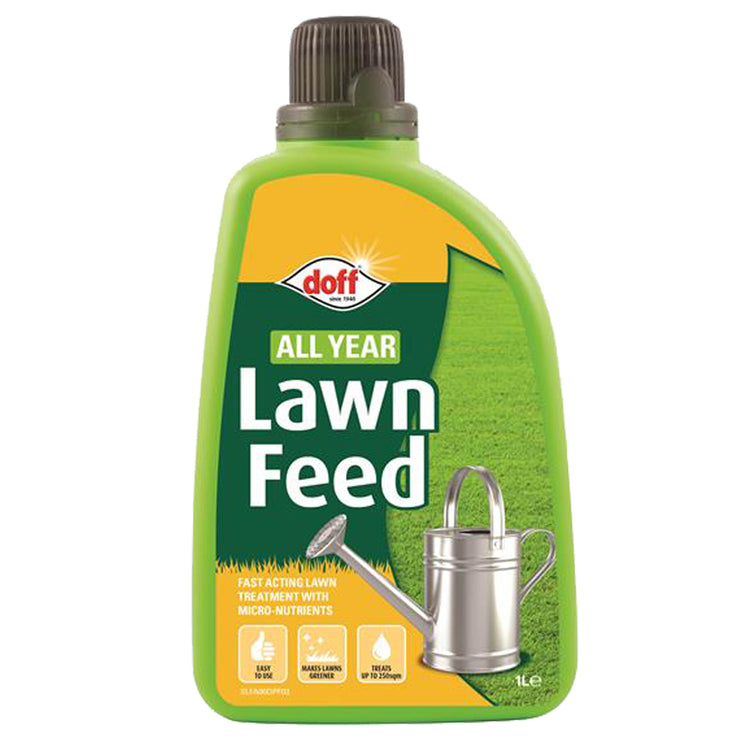Having a lush, healthy lawn is a source of pride for many homeowners. However, maintaining such a lawn requires more than just mowing and watering it regularly. Lawn feeding or fertilizing is an essential aspect of lawn care, and one that is often overlooked. A well-fed lawn is not only greener and more attractive, but it is also more resistant to pests, disease, and drought. In this ultimate guide to effective lawn feeding, we’ll cover everything you need to know to transform your lawn into a lush and healthy paradise. From the best time to fertilize your lawn and the different types of fertilizers available, to the proper application techniques and tips for troubleshooting common problems, we’ve got you covered. So, let’s get started and take your lawn to the next level!
Why Lawn Feeding is Important for a Healthy Lawn
Lawn feeding plays a crucial role in maintaining a healthy and vibrant lawn. Just like any living organism, grass requires essential nutrients to thrive and withstand environmental stresses. Fertilizing your lawn provides the necessary elements like nitrogen, phosphorus, and potassium that are essential for healthy growth, root development, and overall resilience.
By regularly feeding your lawn, you can promote lush green grass, improve its ability to resist pests and diseases, and enhance its tolerance to drought and foot traffic. Proper lawn feeding also helps to balance the soil’s pH levels, ensuring optimal nutrient uptake by the grass roots.
Understanding the Basics of Lawn Feeding
Understanding the basics of lawn feeding is crucial for achieving a lush, healthy lawn that will be the envy of your neighborhood. Lawn feeding involves providing essential nutrients to your
grass to promote growth, improve color, and increase resistance to pests and diseases.
The three primary nutrients that lawns require are nitrogen, phosphorus, and potassium. Nitrogen is essential for promoting leafy, green growth. Phosphorus aids in root development and overall plant health. Potassium helps with disease resistance and stress tolerance.
Different Types of Lawn Fertilizers and Their Benefits
When it comes to transforming your lawn into a lush, vibrant oasis, choosing the right lawn fertilizer is key. There are various types of lawn fertilizers available, each offering unique benefits to help your grass thrive.
Granular fertilizers are a popular choice for many homeowners. These solid particles are easy to apply and provide a slow-release of nutrients to feed your lawn over an extended period. Granular fertilizers are ideal for promoting steady growth and overall health of your grass.
Factors to Consider Before Feeding Your Lawn
Feeding your lawn is a crucial step in maintaining its health and appearance. However, before you start spreading fertilizer, there are several key factors to consider to ensure you’re providing
your lawn with the right nutrients at the right time.
**Season**: The time of year plays a significant role in determining when to feed your lawn. Different types of fertilizers are designed for specific seasons to cater to the changing needs of
your grass.
**Grass Type**: Understanding the type of grass in your lawn is essential as different grass species have varying nutrient requirements. Warm-season grasses, such as Bermuda or Zoysia, have different feeding schedules compared to cool-season grasses like fescue or bluegrass.
How to Determine the Right Feeding Schedule for Your Lawn
Determining the right feeding schedule for your lawn is crucial to ensure its health and vibrancy. Factors such as the type of grass, climate, soil conditions, and the time of year all play a role in determining how often and when you should feed your lawn.
First and foremost, it’s important to understand the type of grass you have in your lawn. Different grass species have varying nutrient requirements and growth patterns. Warm-season grasses like Bermuda grass and Zoysia grass have different feeding schedules compared to cool-season grasses such as Kentucky bluegrass and fescue.
Conclusion
We hope this ultimate guide to effective lawn feeding has provided you with valuable insights and tips to transform your lawn into a lush, vibrant paradise. By following the advice outlined in this post, you can ensure that your lawn receives the essential nutrients it needs to thrive and remain healthy throughout the seasons. Remember, a well-fed lawn not only enhances the beauty of your outdoor space but also contributes to a more sustainable and eco-friendly environment. Here’s to a greener, healthier lawn for you to enjoy for years to come!

